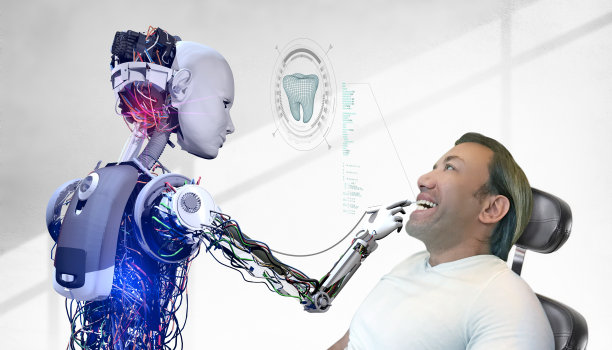Transforming Smiles Through Dental Implant Treatment A Comprehensive Guide to Restore Function and Aesthetics
Summary: Dental implants have revolutionized the way we approach oral rehabilitation, providing a lasting solution for missing teeth. In this comprehensive guide, we delve into the transformative effects of dental implant treatments in restoring both function and aesthetics. First, we explore their numerous advantages over traditional denture solutions. Next, we discuss the detailed process of implant placement and recovery. Further, we highlight the role of modern technology in enhancing treatment outcomes. Lastly, we look into aftercare and maintenance strategies that ensure the longevity of dental implants. By the end, readers will appreciate how dental implants can profoundly enhance quality of life.
1. Advantages of Dental Implants Explained

One of the most significant advantages of dental implants is their ability to restore full function to the mouth. Unlike traditional dentures, which can slip and create discomfort, implants are securely anchored into the jawbone. This stability enables patients to chew their favorite foods without fear of their dentures moving or causing pain. This aspect not only boosts confidence but also encourages a more varied and nutritious diet.
Another remarkable benefit is the aesthetic appeal that dental implants provide. They are designed to look and feel like natural teeth, thus allowing individuals to smile freely. This improvement can significantly enhance self-esteem and social interactions. The positive impact of aesthetic restoration is profound, with many patients noting substantial improvements in their overall happiness following treatment.
Additionally, dental implants contribute to long-term oral health. When teeth are lost, the jawbone can begin to deteriorate over time. Implants stimulate the jawbone, which helps maintain its structure and prevent further bone loss. This proactive approach ensures that both functionality and aesthetics are preserved well into the future.
2. Overview of the Implant Process
The dental implant process begins with an initial consultation, where the dentist evaluates the patient’s oral health and creates a customized treatment plan. This step is crucial as it allows the dentist to address any underlying issues, such as periodontal disease, that may affect the implants success. A thorough examination may involve X-rays and impressions to map out the implant placement accurately.
Following the assessment, the surgical phase occurs, where titanium posts are placed into the jawbone. This procedure, often performed under local anesthesia, is minimally invasive. After the implants are placed, a healing period is necessary for the bone to integrate with the implants, a process known as osseointegration, which can take several months. During this time, patients must follow specific aftercare instructions to promote healing.
Finally, once integration is complete, the final restoration is placed. This involves attaching custom-made crowns to the implants, providing a natural appearance and restoring full functionality. Throughout this entire process, open communication between the patient and dentist is essential to ensure a successful outcome.
3. Role of Technology in Modern Implant Dentistry
Recent advancements in technology have significantly improved the dental implant process, making it more efficient and predictable. One such innovation is digital implant planning, which enables dentists to create precise surgical guides. These guides enhance accuracy during placement, leading to better outcomes and reduced recovery time.
3D imaging technology has also transformed how dentists assess a patients oral structure. This method allows for a comprehensive view of the jawbone and surrounding tissues, leading to improved treatment planning. Consequently, this meticulous approach reduces complications and enhances patient outcomes.
Furthermore, the introduction of computer-guided surgeries has made the implant placement process more streamlined. These techniques enhance precision and minimize invasiveness, reducing healing time and overall discomfort for patients. As technology continues to evolve, so does the standard of care in implant dentistry.
4. Aftercare and Maintenance for Longevity
Aftercare is crucial for the success and longevity of dental implants. Patients must maintain excellent oral hygiene by brushing and flossing regularly. Specialized cleaning techniques may be recommended to ensure that the areas around the implants are thoroughly clean. Regular dental check-ups also play a vital role in monitoring the health of the implants and surrounding gums.
Additionally, avoiding harmful habits such as smoking can significantly improve the success rate of dental implants. Smoking is known to hinder healing and can lead to complications following the procedure. Adopting a healthy lifestyle further supports the longevity of dental implants, allowing patients to enjoy their restored smiles for many years.
Lastly, patients should be aware of any signs of complications, such as discomfort or changes in appearance. Promptly addressing these issues with their dentist can help ensure the long-term success of their dental implants.
Summary:
This guide illustrates the transformative power of dental implants in restoring both function and aesthetics, emphasizing their numerous advantages over traditional solutions. Furthermore, we explored the meticulous process of implant placement, the impact of technological advancements, and essential aftercare strategies. By choosing dental implants, individuals can improve their quality of life and enjoy renewed confidence in their smiles.
This article is compiled by Vickong Dental and the content is for reference only.



